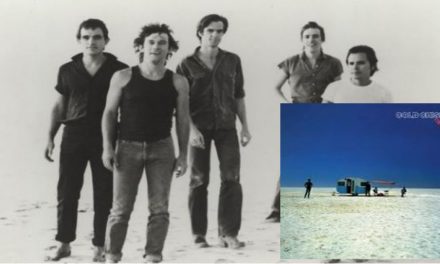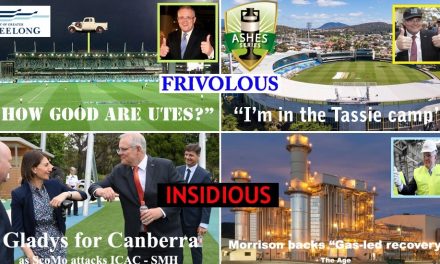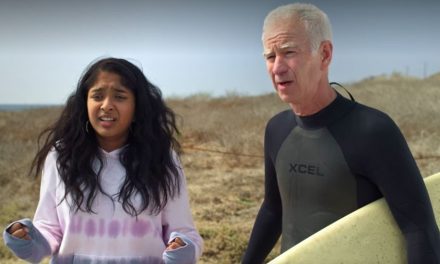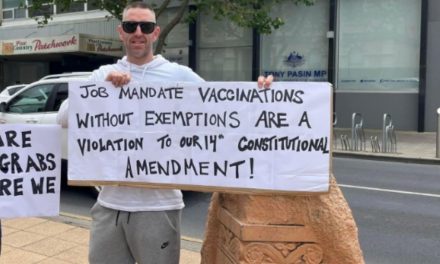Kate Winslet as Mare Sheehan in “Mare Of Easttown” is strong, smart, driven and refreshingly real. Photo: HBO
I’ve always had a thing for women detectives on TV.
Helen Mirren in “Prime Suspect”, Sophie Grabol (and her hand-knitted jumper) in the Danish series “The Killing”, Gillian Anderson in “The Fall”, Sarah Lancashire in “Happy Valley”, Toni Colette in “Unbelievable” – and most recently Kate Winslet as Mare in “Mare of Easttown”. Or, as I like to call it: Mare of Lockdown.
These gripping screen heroines are my kind of women. Strong, smart, driven and flawed. And by flawed, I mean human, refreshingly real.
Their characters stand out because they come fully formed. They don’t represent some kind of glossy ideal, a cardboard cut-out representation of reality – someone’s manicured ideal. And that can be a simple thing like waking up in the morning … looking like they have just woken up in the morning.
Like womanhood itself, you can’t squeeze them into the same box. They’re all things.
The one thing they do share is a fierce independence. They don’t doggedly follow the ‘rules’; they shoot the finger to the script society has rolled out for a woman in a man’s world. (And nothing is more masculine than the world of crime-solving.)
They don’t roll over, they confront and challenge sexism when they see it, they fight against discrimination, and, because they’re brilliant, they always uncover the most obscure link to solve the crime. They smile when they want to (not often), they swear when they want to (very often) and they wear what the hell they want.
They do it their way.
As Grabol, who plays Sarah Lund in “The Killing” eloquently puts it: “Lund’s so sure of herself she doesn’t have to wear a suit.” (Instead, she wears a jumper so fashionably unfashionable it inspired a cult-like devotion).
When DSI Stella Gibson in “The Fall” is asked: “What if he kills a prostitute next? Or a woman walking home drunk?” Gibson responds: “The media loves to divide women into virgins and vamps, angels or whores. Let’s not encourage them.” Best. Line. Ever.
Off screen, Winslet is doing her bit to change the way society views women.
In a recent interview in “The New York Times”, she revealed that the director of “Mare of Easttown” had offered to edit a “bulgy bit of belly” in her sex scene with Guy Pearce – an offer Winslet refused, saying: “Don’t you dare!”
She also sent back the promo poster twice because it was heavily airbrushed. “Guys, I know how many lines I have by the side of my eye, please put them all back”, she said.
You could argue it’s easy for Winslet to be opinionated and bold because she’s in the privileged position of having lots of money, job security and Hollywood connections – and yes, all that is true (and then some). But it’s a view that sells her short.
PLEASE HELP US CONTINUE TO THRIVE BY BECOMING AN OFFICIAL FOOTYOLOGY PATRON. JUST CLICK THIS LINK.
Her words are important and powerful and go way beyond the film industry. It’s not just women approaching 50 who feel the pressure to look a certain way. Body negativity and shaming are endemic in our society and can start at an early age for both girls and boys.
Mission Australia’s latest annual survey of young people aged 15-19 in 2020 identified body image as one of the top three personal concerns for young Australians.
The top three were coping with stress (42.5%), mental health (33.9%) and body image (33.0%). The proportion of females concerned about these issues (and many of the other issues) was much higher than the proportion of males.
Compared with male respondents, notably higher proportions of female respondents were extremely or very concerned about coping with stress (55.5% compared with 24.8%), body image (45.9% compared with 15.7%), mental health (43.4% compared with 20.7%) and school or study problems (40.5% compared with 21.4%).
Winslet’s words matter because having a negative body image can lead to mental health problems, extreme dieting and eating disorders.
These alarming statistics show nothing much has changed from my high school years in the 1980s, where friends dropped out of PE because they hated the way they looked.
I saw girls living on a diet of Coke, chips and cigarettes – already terrified of food and already dangerously harsh on their bodies. I saw girls relentlessly pursuing a notion of “beauty” pushed by glossy magazines, advertising agencies, movies and popular culture. And if this meant starving themselves to fit in, throwing up what they ate, then so be it.
If anything, the internet and cyber-bullying has made it worse for kids and teenagers today, who under the influence of “influencers”, are chasing the perfect Instagram image. The pursuit is mostly unobtainable. It’s fake.
Winslet’s words matter because the social pressure to conform to beauty ideals never really goes away for women. It just changes. It becomes less about vanity and more about career survival.
Society is more accepting of older men for whom grey hair is distinguished and a sign of great wisdom. Women are judged differently. Women who don’t dye their hair run the very real risk of being thought of as “past it”.
In public life, this double standard is even more pronounced. Just consider “Friends: The Reunion”. The three women looked great, but undeniably locked in time. Women have a “Hobson’s Choice” – get off the bullshit beauty merry-go-round or keep your career ticking along?
Instead of airbrushing, photoshopping and editing out body parts to meet one particular type of ‘beautiful’, it’s time we were allowed to celebrate who we are. Faces change. Bodies change. Faces that change are beautiful. Bodies that change are beautiful.
This conversation shouldn’t be a fad just because a Hollywood celebrity has had her say. It needs to be ongoing. And you don’t need to be Agatha Christie to figure that one out.













Brilliant article. Couldn’t agree more, although the pressure on males in regards to body image is certainly a growing trend. As a 44 yr old male, I feel like I’ve pondered diet and exercise way too much and regardless of efforts including running three marathons, it’s still a battle ongoing that I’m probably losing. I am also a teacher of Middle School students, predominantly boys, and the body image issue is growing in those boys for sure. By the way, your line of ‘under the influence of “influencers” carries so much – the best line I’ve read in a while.